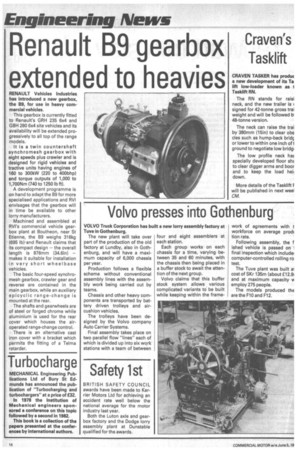Volvo presses into Gothenburg
Page 12

If you've noticed an error in this article please click here to report it so we can fix it.
The new plant will take over part of the production of the old factory at Lundby, also in Gothenburg, and will have a maximum capacity of 6,000 chassis per year.
Production follows a flexible scheme without conventional assembly lines with the assembly work being carried out by teams.
Chassis and other heavy components are transported by battery driven trolleys and aircushion vehicles.
The trolleys have been designed by the Volvo company Auto Carrier Systems.
Final assembly takes place on two parallel flow "lines" each of which is divided up into six work stations with a team of between four and eight assemblers at each station.
Each group works on each chassis for a time, varying between 35 and 60 minutes, with the chassis then being placed in a buffer stock to await the attention of the next group.
Volvo claims that this buffer stock system allows various complicated variants to be built while keeping within the frame work of agreements with I workforce on average prodi tion rate.
Following assembly, the f ished vehicle is passed on • final inspection which includei computer-controlled rolling ro test.
The Tuve plant was built ai cost of SKr 135m (about £12.9 and at maximum capacity v employ 275 people.
The models produced thE are the F10 and F12.


























































